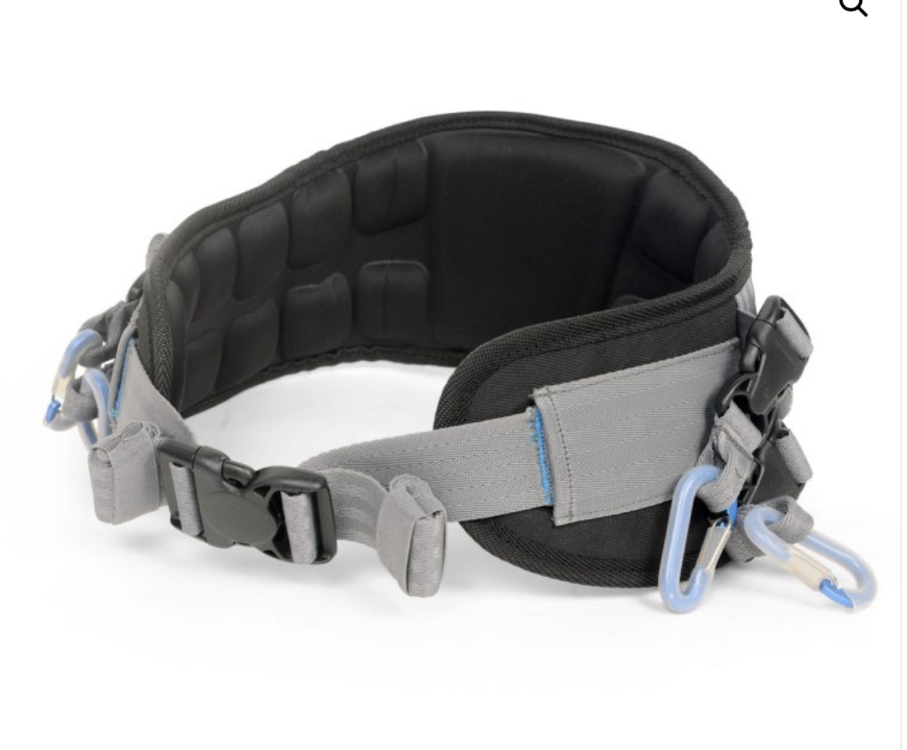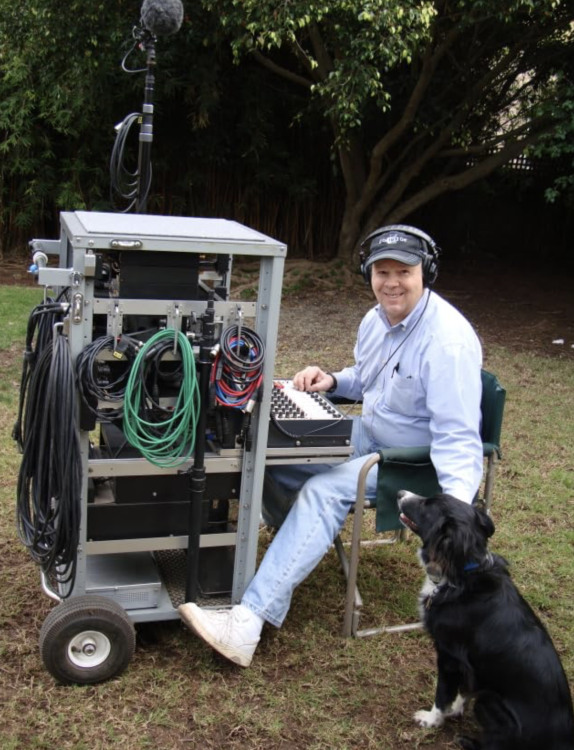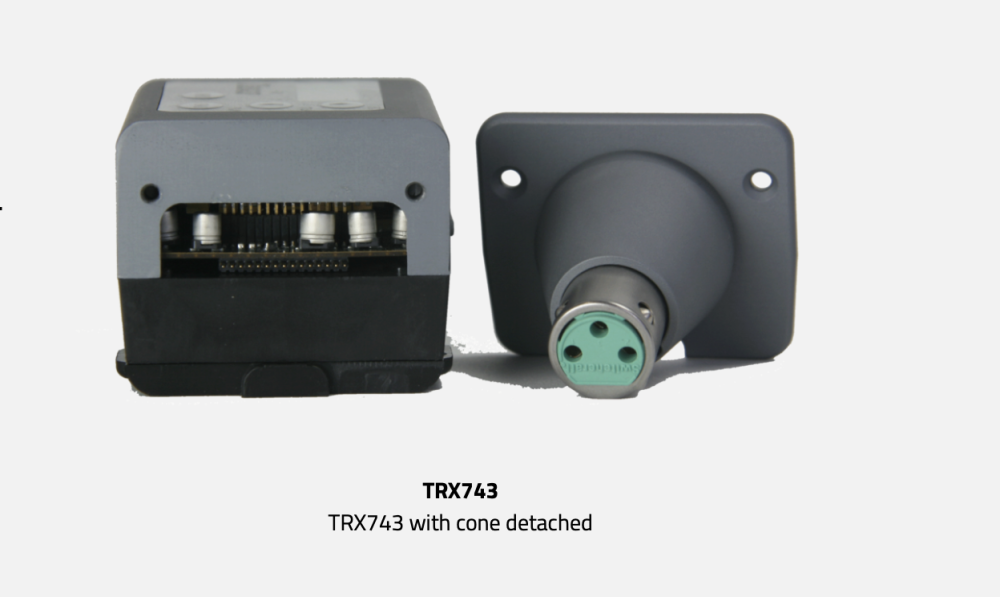-
Posts
2,813 -
Joined
-
Last visited
-
Days Won
41
About Jim Feeley
- Birthday January 1
Profile Information
-
Location
Northern California
-
About
sound, journalism, producing
-
Interested in Sound for Picture
Yes
Recent Profile Visitors
The recent visitors block is disabled and is not being shown to other users.
-
Olle, great thought. I'd love to know what people think so I started a new thread:
-
[That's a quote from Olle in this thread. I'm replying in this new thread because I'd love to read people's experiences and thoughts on this approach -- Jim] Olle, I might be misreading your thought, but I too think a belt might work since for me (my bags are small (633, a few RX, a TX, etc...maybe something smaller soon). Two belts I know of: K-Tek KSWB1 – Stingray Waist Belt https://ktekpro.com/product/kswb1-stingray-waist-belt/ ORCA OR-370 Advanced Audio Waist Belt https://www.orcabags.com/product/or-370-advanced-audio-waist-belt/ Who here has used belts with bags? How big a bag worked...and what size was just too big? Overall, what did you think? A sometimes solution, the way you like to go, just didn't work for you?
-
-
Maybe the switchable connector cone screws are a bit loose? Or the cable from the XLR connector to the main TX board? Perhaps give Zaxcom a call and they can get it sorted? Though factor in NAB time as you await a response...
-
Maybe also consider the Sanken CS-M1, which costs $895US and £729.00 at Pinknoise Systems (not an endorsement; they are the only UK reseller I know). I own a CS-M1, as well as a CS-3e (and a 416 that doesn't come out much). I'd say the CS-M1 is a bit wider than the CS-3e and perhaps a touch harsher, but still really useable (a haven't really done a careful comparison; the M1 is a useful mic). And it's like 4-inches/100mm long; nice on a camera. Here's a brief discussion from a couple years ago that talks about the CS-M1, and gives some people's impressions of the differences between it at a CS-3e. And search this site for other discussions of the various mics you're considering. But I'd give the CS-M1 a listen if you can.
-
In the US, there are a bunch of job/gig/employment scams these days. Here are a couple of articles about some of these from the US government's Federal Trade Commission website (while this current situation appears to be all/partly happening in the US, I think the basic approach is being used in lots of countries). Basically, the ones I'm hearing about from friends who've been approached are variations on the fake-check scam and the give-us-personal-info identity-theft scam. Scammers impersonate well-known companies, recruit for fake jobs on LinkedIn and other job platforms How To Spot, Avoid, and Report Fake Check Scams Sigh. Another thing to be careful about.
-
This book by Jay Rose, who passed away four years ago, is really good. Starts with a clear description of how sound works and builds from there. However, this edition is ten years old and has a street price of $55, and last I knew the publishers were still trying to get ahold of the online files that go with the book (Jay maintained the website for that, and that site is gone). Ask the publisher to send you an inspection copy (Routledge, the publisher, will do that). Feels to me that this book can still provide a solid foundation for all students, those focusing on audio and those focusing on other areas. Producing Great Sound for Film and Video Expert Tips from Preproduction to Final Mix In Producing Great Sound for Film and Video, Fourth Edition audio guru Jay Rose revises his popular text for a new generation of filmmakers. You’ll learn practical, time-saving ways to get better recordings, solve problems with existing audio, create compelling tracks, and boost your filmmaking to the next level! Here you’ll find real-world advice and practical guidelines for every aspect of your soundtrack: planning and budgeting, field and studio recording, editing, sound effects and music, audio repair, processing, and mixing. Rose’s combination of solid technical information and a clear, step-by-step approach has made this the go-to book for producers and film students for over a decade. New in this edition: Insights and from-the-trenches tips from top professionals Instructions for getting the best results from new DSLRs and digital recorders What you need to know about new regulations for wireless mics and broadcast loudness An expanded "How Do I Fix This?" section to help you solve problems quickly Whether you’re an aspiring filmmaker who wants better tracks, or an experienced professional looking for a reference, Producing Great Sound for Film and Video, Fourth Edition has the information you need. https://www.routledge.com/Producing-Great-Sound-for-Film-and-Video-Expert-Tips-from-Preproduction-to-Final-Mix/Rose/p/book/9780415722070
-
I've had a K-Tek "Traveler" pole for 15+ years. Six sections, collapses to under 60cm. It's not my main pole, but it's been fine with whatever I throw on the end (typically a CS3e or smaller). So I suggest at that short length 5 vs. 6 sections isn't a big deal.
-
If someone acquires Aaton's assets, I don't think they'll revive Cantar as it stands now. I'd think a buyer would be after patents, people, and prestige. Sorry to keep bringing up BMD, but look at their acquisitions of da Vinci Systems, Fairlight, and eyeon; all makers of expensive niche products and the first two (at least) arguably with little chance of future sales. Yet all have contributed to Grant Petty's vision of world domination (or at least of his vision for low-cost yet capable post software). Also, I'm pretty sure BMD didn't pay much for those acquisitions. I don't know if Aaton has any valuable patents, and I don't know if the team has already dispersed. But I think the name still has some cachet. But again, I mainly hope the people associated with Aaton land in a good place.
-
OTOH, Sony bought Konica Minolta, reportedly for their patents and their engineers. That acquisition launched Sony's move into good still cameras. Also Aiwa, Sonic Foundry, some semiconductor companies and manufacturing plants, Audeze, and a bunch of other stuff. So they do acquire companies even when they have some in-house expertise. But Aaton I'd guess serves too narrow a market for Sony to acquire. I'd think Blackmagic might be a more likely candidate, though I don't think they have as much cash floating around as they did before (no idea, really). I mean, they acquired Fairlight...and most of the engineers came along (and last I heard were fairly happy there), and eyeon software (developers of fusion) and at least some of the engineers are still at BMD and happy (I was acquitted with Steve Roberts, eyeon's CEO and original developer and we usually have a quick catchup if we see each other and NAB). But I really have no idea and I hope the people at Aaton all land at good places.
-
Not much around here, sadly. Looks like StudioB in Berkeley has a Rode blimp with Rycote Windjammer. https://sfvideoproduction.com/sound-equipment-rentals/rode-blimp-windshield-w-rycote-windjammer/ And Borrowlenses has a location in San Carlos, and will courier. They have some Rode stuff: https://www.borrowlenses.com/rent/category/production/audio?q=%3Atopsellers%3Abrand%3Arode&text=&clearBrands=&brand-Rode=on# Then maybe Sharegrid?
-
I saw the Sennheiser marketing on WMAS last year. Are other companies adopting WMAS, or something like it? Press Release from today, Feb 15, 2024 (Link to report & Order below): FCC EXPANDS OPPORTUNITIES FOR WIRELESS MICROPHONE USERS New Rules Allow WMAS Technology That Enables More Wireless Microphones to Operate with Greater Efficiency -- WASHINGTON, February 15, 2024—The Federal Communications Commission today adopted new rules to allow a new, more spectrally efficient wireless microphone technology to operate. Wireless Multi-Channel Audio Systems (WMAS) use spectrum more efficiently than currently available narrowband microphones, meaning more microphones can be used without allocating more airwaves. The rules will permit WMAS to operate on a licensed or unlicensed basis, while preserving the existing spectrum rights of others that share those frequencies. Wireless microphones, which operate under the FCC’s technical rules for Part 74 low-power auxiliary station devices and Part 15 unlicensed devices, can be found in a variety of settings, including theaters and music venues, TV and film studios, educational institutions, conventions, corporate events, houses of worship, and internet webcasts. The new rules will allow WMAS to operate in the broadcast TV bands and 600 MHz duplex gap on both a licensed and unlicensed basis, and in other Part 74 LPAS frequency bands on a licensed basis. WMAS will enable more wireless microphones to operate in the spectrum available (i.e., more microphones per megahertz of spectrum), which provides additional options when more microphones are needed. The rules do not alter the existing spectrum rights or expectations regarding spectrum access and availability as it relates to other authorized users that share the frequency bands with wireless microphone operations (including, for example, broadcast licensees, Wi-Fi, and white space device users). Action by the Commission February 15, 2024 by Report and Order (FCC 24-22). Chairwoman Rosenworcel, Commissioners Carr, Starks, Simington, and Gomez approving. Chairwoman Rosenworcel issuing a separate statement. ### Full Report & Order, and a couple other links on the FCC website here: https://www.fcc.gov/document/fcc-expands-opportunities-wireless-microphone-users-0
-
That's the video Jeff embedded in the first post above. 30min.
-
"Sound can make the difference between life and death." —David Attenborough (A line worth quoting to clients. 😉) A bit from the press release: Sky Nature unveils first look at Secret World of Sound with David Attenborough Brand new, three-part nature series uses world class technology to listen to the animal world like never before Series will launch on Sky Nature and streaming service NOW on Sunday 25 February " Filmed in 4K ultra-high definition, each episode of the series will feature in-depth stories of eight animals, followed by five-minutes of Behind-The-Scenes footage. Unveiling the very latest in audio technology, the series uses specially adapted cameras and laser vibrometers, which allows humans to truly eavesdrop on the animal world for the first time and discover new stories and information that have been hidden until now. The series incorporates microphones so tiny, they fit on your fingertip, and so precise they can detect the noise of a baby caiman calling from inside the egg. With 360-Dolby Atmos Sound, viewers will experience the breath-taking sounds of the natural world as never heard before." The whole release is here: https://www.skygroup.sky/en-gb/article/sky-nature-unveils-first-look-at-secret-world-of-sound-with-david-attenborough Here's the trailer:








